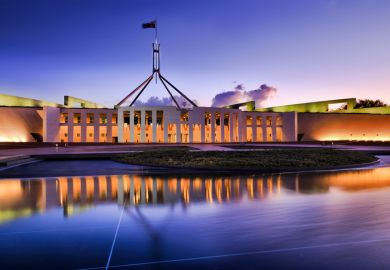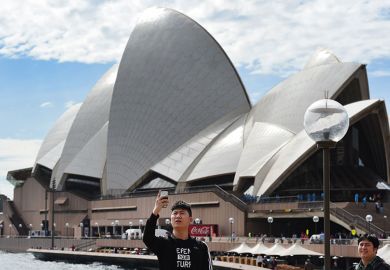Government dithering has squandered hundreds of millions of dollars in potential earnings from Australia’s dormant research infrastructure funding scheme, according to the investment banker who used to guide spending from the Education Investment Fund (EIF).
And Phil Clark said that rather than redirecting the EIF’s remaining A$3.9 billion (£2.2 billion) into a scheme for flood and fire victims, the government should use the money to help insulate universities from a potentially catastrophic loss of international tuition income.
“Cross-subsidisation of research funding through international students is a time bomb,” said Mr Clark, who chaired the EIF advisory board until its disbandment in 2014. “You’re talking [about] up to A$5 billion a year.
“If the Chinese wake up on Monday and say no more students go to Australia, the wages bill for the researchers is still going to be there. How are [universities] going to pay it? That’s the sort of area I’d like to see [the Australian government] at least thinking about.”
Initially worth A$6.5 billion, the EIF bankrolled A$4.2 billion of new research and teaching infrastructure and is credited with helping Australia avoid recession during the global financial downturn last decade.
The Coalition decided to close the EIF in 2014 and has tried to transfer its unallocated funds into the Asset Recycling Fund – a failed attempt to incentivise the states to spend more on infrastructure – and subsequently the National Disability Insurance Scheme.
Both moves were blocked in the Senate. But the government’s latest plan – to divert EIF funds into an Emergency Response Fund announced in this year’s April budget – appears more likely to succeed after the opposition Labor Party decided not to thwart the closure of another major infrastructure funding scheme, which is often bracketed with the EIF.
The Building Australia Fund (BAF) was established at the same time as the EIF, and has also been slated for closure several times. On 22 July Labor objected to the axeing of the BAF to bankroll a drought relief scheme but decided not to vote against the change.
A spokeswoman for shadow education minister Tanya Plibersek said that this did not mean the EIF was destined for similar treatment. “Labor will be considering the Emergency Response Fund and its financing if or when the government brings it to Parliament,” she said.
Mr Clark said that it would be a “pity” to wind up the EIF. And he was scathing of its management since the 2014 decision to abolish it.
He said that the money, parked in a “super fund with a cash investment mandate”, had earned less than 1 per cent compared with returns of between 6 and 11 per cent under previous management arrangements. “The money’s been sitting there doing nothing – it’s a shocking example of waste. They should make up their minds and get on with it.”
Mr Clark said that he was relatively “relaxed” about funding for research infrastructure after previous prime minister Malcolm Turnbull allocated A$4 billion for long-term investment. But he said that he would like to see about half the EIF retained in the research sector to bring the total outlay closer to the A$6.6 billion that he found would be needed in a 2015 review.
And he said that relying on international education to fund research was too risky: “Anything can happen – currency fluctuation, geopolitics, changes to immigration regulation, students getting mugged in a park in Melbourne. It’s not a model that makes a lot of commercial sense if you look at it as a businessman.”
POSTSCRIPT:
Print headline: Education fund mismanaged at cost of ‘hundreds of millions’
Register to continue
Why register?
- Registration is free and only takes a moment
- Once registered, you can read 3 articles a month
- Sign up for our newsletter
Subscribe
Or subscribe for unlimited access to:
- Unlimited access to news, views, insights & reviews
- Digital editions
- Digital access to THE’s university and college rankings analysis
Already registered or a current subscriber?








